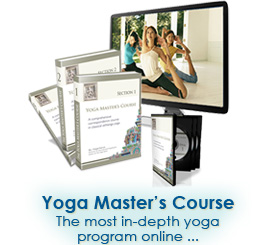[ Excerpt from The Science of Yoga, page 485 ]
A certain degree of withdrawal from the jnanendriyas can be achieved relatively easily with some mechanical effort and attention.
Sight can easily be restrained by closing the eyes. The sense of smell can be tapered by slow and controlled breathing, whereby the air/odour does not reach the upper nasal passages which contain the olfactory sensors. Taste can be inhibited by cleaning the mouth and keeping it closed while breathing; and the tactile sense of touch can be muted by settling oneself into a comfortable and steady position.
Perhaps the most difficult of the jnanendriyas to overcome though, is the faculty of hearing; yet this can be greatly mitigated by preparing a quiet place, free as much as possible from external sounds.
Likewise, the karmendriyas are easily controlled with proper attention. Employment of hasta mudras helps to bring conscious control over the hands; asanas which lock up the legs, such as padma asana, or certain other sitting positions restrain the urge to move the feet (to wander). The practice of mauna, or silence restrains the speech.
Ongoing cultivation of a healthy, restrained diet, and avoidance of alcohol, smoking, junk food and other indulgences can ease the cravings of the karmendriyas from mouth to anus.
To a certain extent, the control of the sexual urge can be attained by removing oneself from sexually stimulating external factors, such as retreating into nature, practicing within a spiritual centre or community, or creating a special place/room within your abode that is reserved only for spiritual practice, thus becoming infused with pure energies.
To a certain degree, one can assess their state of control (or lack of control) over the karmendriyas in the patterns and propensities of their daily life. One who wanders the aisles of the supermarket, perpetually grabbing this and that off the shelf, in the end ending up with a cart full of items when in fact they only intended to buy some bread and juice, can see precisely the unruly nature of the karmendriyas (i.e., the urge to grab).
Children are especially like that. If you go shopping with your young child, you will no doubt spend half your time putting the things back onto the shelves that they have grabbed off of them. And the moment you turn your back, they’ve scurried away! Aparigraha, one of the yamas that we studied earlier in the course, means non-greediness, or non-possessiveness. Can you notice a very similar English word contained within its root? That's right! -- 'grab'!
Or perhaps you have 'itchy feet' as the saying goes. Some people cannot sit still for even a few moments. Others have to be constantly talking, or doing something with their hands, and others still are led around by their lower brain (genitals!), in constant pursuit of the opposite sex! Their ability to control the karmendriyas is severely lacking.
In yoga, many of the practices that we have learned thus far, along with many to come, function as well to condition restraint and to train us, in the grossest sense, to control these organs of action...
[Continued...]
---------------------
NOTE: This yoga article is an excerpt from The Science of Yoga, an online yoga training program with streaming yoga videos and 600 pages of step-by-step yoga instruction.

"The Science of Yoga is a course worthy of
leather binding and an honored place in the
finest libraries in the world
... It is indeed a masterful work."
Dr. John Michael Christian
AwakeningWithYoga.com
Learn More About
The Science of Yoga Course
|






